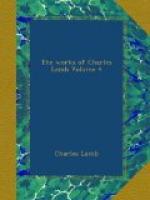* * * * *
CHRISTOPHER MARLOWE.
Lust’s Dominion, or the Lascivious Queen.—This tragedy is in King Cambyses’ vein; rape, and murder, and superlatives; “huffing braggart puft lines,” such as the play-writers anterior to Shakspeare are full of, and Pistol but coldly imitates.
Tamburlaine the Great, or the Scythian Shepherd.—The lunes of Tamburlaine are perfect midsummer madness. Nebuchadnezzar’s are mere modest pretensions compared with the thundering vaunts of this Scythian Shepherd. He comes in drawn by conquered kings, and reproaches these pampered jades of Asia that they can draw but twenty miles a day. Till I saw this passage with my own eyes, I never believed that it was anything more than a pleasant burlesque of mine Ancient’s. But I can assure my readers that it is soberly set down in a play, which their ancestors took to be serious.
Edward the Second.—In a very different style from mighty Tamburlaine is the Tragedy of Edward the Second. The reluctant pangs of abdicating royalty in Edward furnished hints, which Shakspeare scarcely improved in his Richard the Second; and the death-scene of Marlowe’s king moves pity and terror beyond any scene ancient or modern with which I am acquainted.
The Rich Jew of Malta.—Marlowe’s Jew does not approach so near to Shakspeare’s, as his Edward the Second does to Richard the Second. Barabas is a mere monster brought in with a large painted nose to please the rabble. He kills in sport, poisons whole nunneries, invents infernal machines. He is just such an exhibition as a century or two earlier might have been played before the Londoners “by the royal command,” when a general pillage and massacre of the Hebrews had been previously resolved on in the cabinet. It is curious to see a superstition wearing out. The idea of a Jew, which our pious ancestors contemplated with so much horror, has nothing in it now revolting. We have tamed the claws of the beast, and pared its nails, and now we take it to our arms, fondle it, write plays to flatter it; it is visited by princes, affects a taste, patronizes the arts, and is the only liberal and gentlemanlike thing in Christendom.




